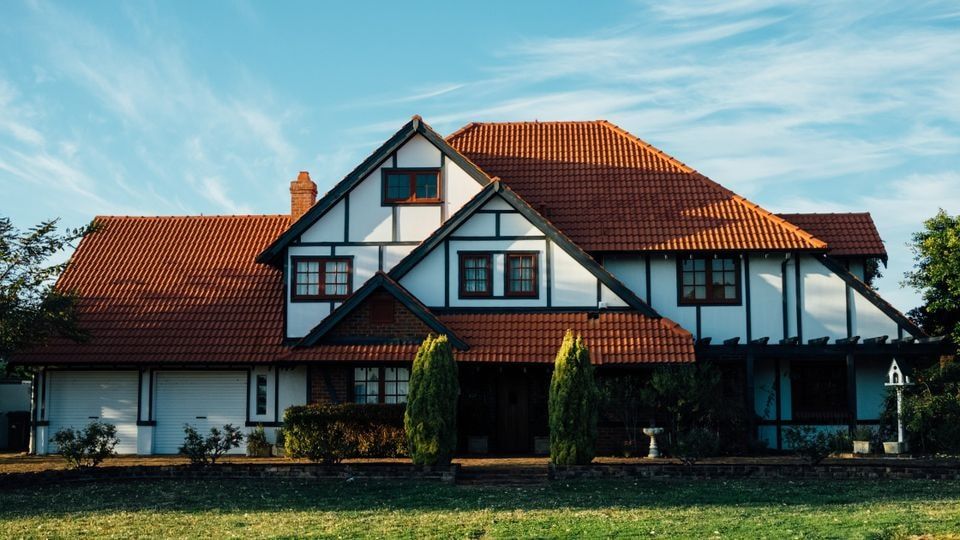

Your home's roof represents one of the most significant investments you'll make in your property. Understanding roof life expectancy helps homeowners plan for future expenses and make informed decisions about maintenance, repairs, and replacements. The lifespan of roofs varies dramatically based on materials, installation quality, and environmental factors.
Most homeowners wonder how long their roofing investment will protect their family and belongings. The answer depends on multiple variables, from the type of roofing materials selected to local climate conditions. A well-maintained roof can exceed its expected lifespan, while poor installation or neglect can drastically reduce its useful years.
Most homeowners wonder how long their roofing investment will protect their family and belongings. The answer depends on multiple variables, from the type of roofing materials selected to local climate conditions. A well-maintained roof can exceed its expected lifespan, while poor installation or neglect can drastically reduce its useful years.
Factors That Determine Roof Life Expectancy
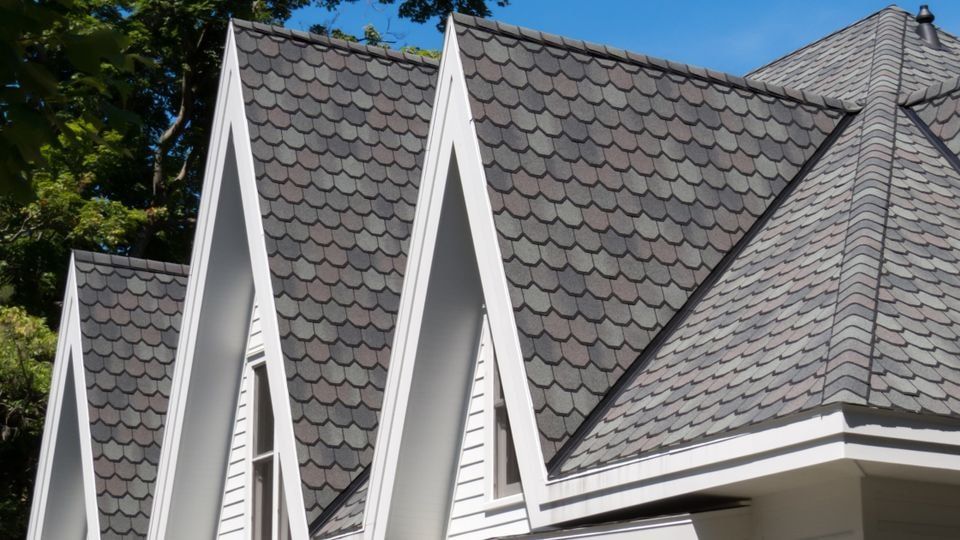
Several key elements influence how long your roof will last. The quality of materials forms the foundation of durability. High quality materials cost more upfront but often provide better value through extended service life and reduced maintenance requirements.
The roof installation process plays an equally critical role. Even premium roofing materials fail prematurely when installed incorrectly. Bad nailing techniques, improper flashing installation, and inadequate ventilation create problems that compound over time. Experienced professionals understand these nuances and execute installations that maximize roof performance.
Environmental conditions create ongoing stress on roofing systems. UV rays gradually break down materials, while temperature fluctuations cause expansion and contraction cycles. Heavy rainfall tests waterproofing protection, and storm damage can compromise structural integrity instantly.
The roof installation process plays an equally critical role. Even premium roofing materials fail prematurely when installed incorrectly. Bad nailing techniques, improper flashing installation, and inadequate ventilation create problems that compound over time. Experienced professionals understand these nuances and execute installations that maximize roof performance.
Environmental conditions create ongoing stress on roofing systems. UV rays gradually break down materials, while temperature fluctuations cause expansion and contraction cycles. Heavy rainfall tests waterproofing protection, and storm damage can compromise structural integrity instantly.
Metal Roofs: Durability Champions
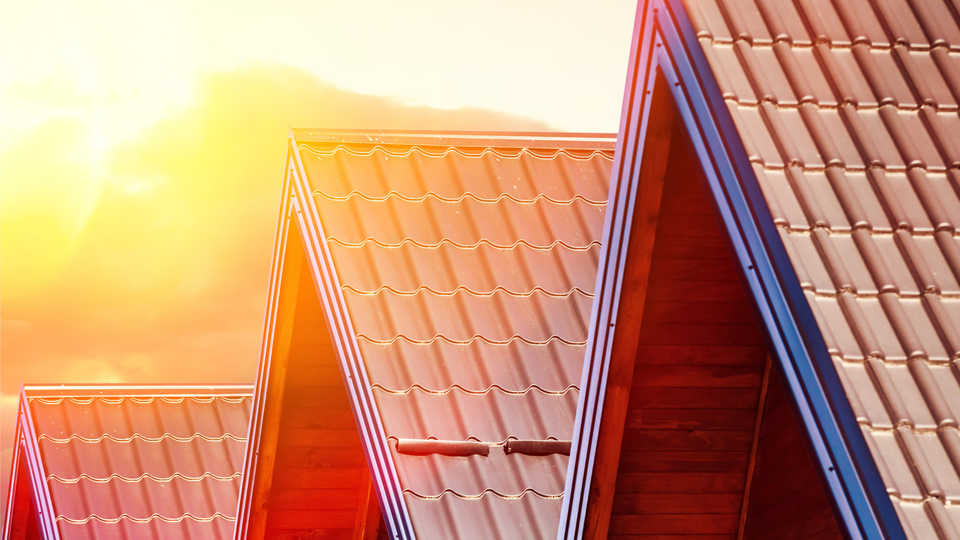
Metal roofs stand out for their exceptional longevity in the roofing industry. These systems typically last 40 to 70 years, making them an excellent long-term investment. Metal roofing materials resist fire, insects, and rot while requiring minimal maintenance throughout their service life.
Quick tip: Metal roofs reflect sunlight effectively, reducing cooling costs during summer months and improving energy efficiency.
Modern metal roofs come in various styles that mimic traditional materials like clay tiles or wood shingles. Steel, aluminum, and copper options each offer distinct advantages. Steel provides strength and affordability, aluminum resists corrosion in coastal areas, and copper develops an attractive patina while lasting over 100 years.
The installation process for metal roofs requires specialized knowledge. Proper fastening techniques prevent wind uplift, while correct flashing details ensure watertight seals. When installed by experienced professionals, metal roofs often outlast the buildings they protect.
Quick tip: Metal roofs reflect sunlight effectively, reducing cooling costs during summer months and improving energy efficiency.
Modern metal roofs come in various styles that mimic traditional materials like clay tiles or wood shingles. Steel, aluminum, and copper options each offer distinct advantages. Steel provides strength and affordability, aluminum resists corrosion in coastal areas, and copper develops an attractive patina while lasting over 100 years.
The installation process for metal roofs requires specialized knowledge. Proper fastening techniques prevent wind uplift, while correct flashing details ensure watertight seals. When installed by experienced professionals, metal roofs often outlast the buildings they protect.
Asphalt Shingles: Popular and Practical

Asphalt shingles dominate residential roofing across America due to their balance of cost, performance, and appearance. Three tab asphalt shingles represent the most economical option, typically lasting 15 to 20 years. Architectural asphalt shingles offer enhanced durability and aesthetic appeal, extending the lifespan of a roof to 20 to 30 years.
The protective granules on asphalt roofs shield the underlying material from UV damage. These granules gradually shed over time, which signals the approaching end of the roof's useful life. Quality shingles maintain their granule coating longer, providing extended protection.
Asphalt roofs perform well in most climate conditions but show sensitivity to extreme temperature variations. Consistent temperature regions often see longer service life compared to areas with dramatic seasonal changes. Proper ventilation prevents moisture buildup that can lead to premature deterioration and mold growth.
The protective granules on asphalt roofs shield the underlying material from UV damage. These granules gradually shed over time, which signals the approaching end of the roof's useful life. Quality shingles maintain their granule coating longer, providing extended protection.
Asphalt roofs perform well in most climate conditions but show sensitivity to extreme temperature variations. Consistent temperature regions often see longer service life compared to areas with dramatic seasonal changes. Proper ventilation prevents moisture buildup that can lead to premature deterioration and mold growth.
Understanding the Lifespan of a Roof by Material Type
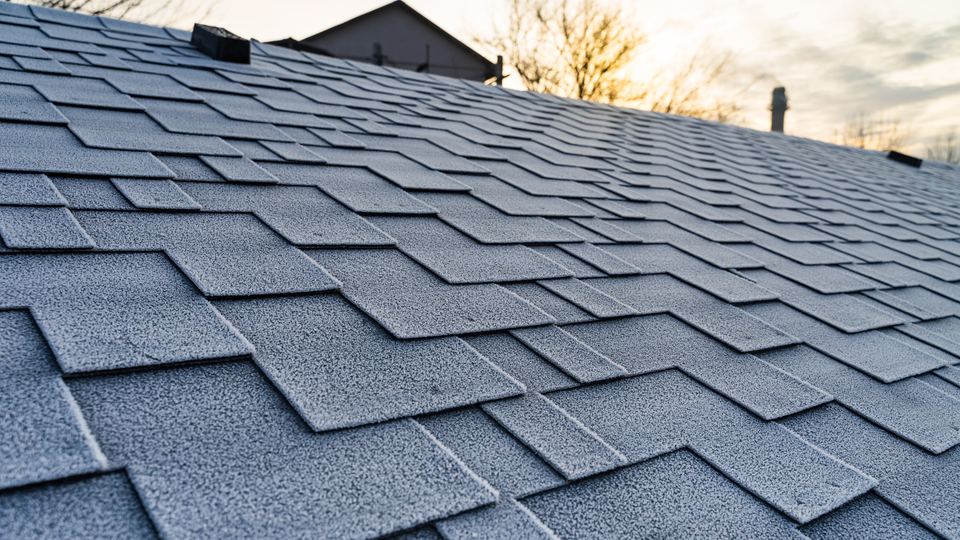
Different roofing materials offer varying lifespans and maintenance requirements. Clay tiles can last 50 to 100 years when properly maintained, making them popular in warmer climates. Their weight requires adequate structural support, but their durability justifies the investment for many homeowners.
Slate roofs represent the premium end of the price spectrum, potentially lasting over 100 years. These remarkably durable materials resist fire, insects, and severe weather conditions. However, their weight and specialized installation requirements make them suitable only for properly reinforced structures.
Wood shingles provide natural beauty but require regular maintenance to achieve their potential 20 to 40-year lifespan. Climate and weather conditions significantly impact wood roofing performance. Areas with consistent moisture face challenges with rot and insect damage, while dry climates may experience cracking and fire risk.
Tile roofs offer excellent longevity when manufactured from quality materials and installed correctly. Concrete tiles cost less than clay alternatives while providing similar durability. Both options resist fire and severe weather, making them excellent choices for areas prone to natural disasters.
Did you know? Metal roofs can support solar panels more effectively than other roofing materials due to their structural strength and smooth surface.
Slate roofs represent the premium end of the price spectrum, potentially lasting over 100 years. These remarkably durable materials resist fire, insects, and severe weather conditions. However, their weight and specialized installation requirements make them suitable only for properly reinforced structures.
Wood shingles provide natural beauty but require regular maintenance to achieve their potential 20 to 40-year lifespan. Climate and weather conditions significantly impact wood roofing performance. Areas with consistent moisture face challenges with rot and insect damage, while dry climates may experience cracking and fire risk.
Tile roofs offer excellent longevity when manufactured from quality materials and installed correctly. Concrete tiles cost less than clay alternatives while providing similar durability. Both options resist fire and severe weather, making them excellent choices for areas prone to natural disasters.
Did you know? Metal roofs can support solar panels more effectively than other roofing materials due to their structural strength and smooth surface.
Commercial Roof Systems and Longevity

Commercial roof systems face unique challenges due to building size, access requirements, and structural loads. Flat roofs dominate commercial applications due to cost efficiency and maintenance accessibility. These systems typically last 10 to 30 years, depending on materials and maintenance practices.
Low slope roofs require specialized waterproofing approaches since they cannot rely on gravity for drainage like steep slopes. Built-up roofing, modified bitumen, and single-ply membranes each offer distinct advantages for commercial applications.
Commercial roofing materials must accommodate foot traffic, HVAC equipment, and potential future installations. Building managers often choose systems that balance initial cost with expected life spans and maintenance requirements. A commercial roof's lifetime depends heavily on routine maintenance and prompt attention to minor issues.
The exterior roof of commercial buildings endures additional stress from equipment vibrations, chemical exposure, and frequent access. Regular inspections by certified professionals help identify problems before they compromise the entire system.
Low slope roofs require specialized waterproofing approaches since they cannot rely on gravity for drainage like steep slopes. Built-up roofing, modified bitumen, and single-ply membranes each offer distinct advantages for commercial applications.
Commercial roofing materials must accommodate foot traffic, HVAC equipment, and potential future installations. Building managers often choose systems that balance initial cost with expected life spans and maintenance requirements. A commercial roof's lifetime depends heavily on routine maintenance and prompt attention to minor issues.
The exterior roof of commercial buildings endures additional stress from equipment vibrations, chemical exposure, and frequent access. Regular inspections by certified professionals help identify problems before they compromise the entire system.
How Long Should Your Roof Last in Different Climates?
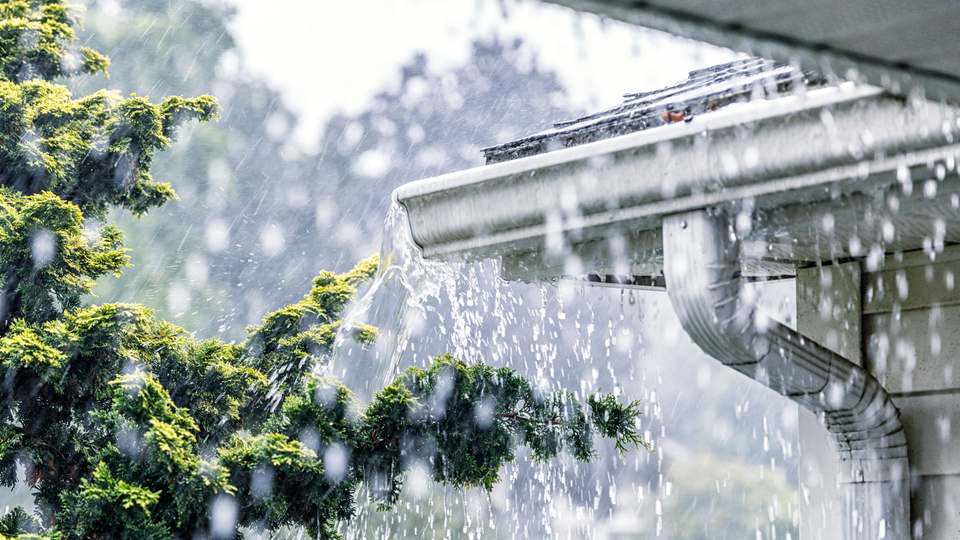
Local climate plays a crucial role in determining performance and a roof's longevity. Climate and weather conditions create specific challenges that vary by geographic region. Areas with extreme temperature fluctuations stress materials through repeated expansion and contraction cycles.
Regions with heavy rainfall test waterproofing systems continuously. Poor drainage can lead to standing water, which accelerates deterioration and creates leak risks. Proper roof deck preparation and drainage design become critical in these environments.
Quick tip: Regular inspections after severe weather events help identify damage early, preventing minor issues from becoming major problems.
Areas that experience more heat throughout the year challenge roofing materials differently than cold climates. UV exposure breaks down organic compounds, while thermal cycling creates stress fractures. Light-colored materials and proper ventilation help mitigate these effects.
Coastal regions face salt air exposure that accelerates corrosion of metal components. Wind-driven rain creates additional penetration risks, requiring enhanced sealing techniques. Local climate conditions should influence both material selection and maintenance schedules.
Regions with heavy rainfall test waterproofing systems continuously. Poor drainage can lead to standing water, which accelerates deterioration and creates leak risks. Proper roof deck preparation and drainage design become critical in these environments.
Quick tip: Regular inspections after severe weather events help identify damage early, preventing minor issues from becoming major problems.
Areas that experience more heat throughout the year challenge roofing materials differently than cold climates. UV exposure breaks down organic compounds, while thermal cycling creates stress fractures. Light-colored materials and proper ventilation help mitigate these effects.
Coastal regions face salt air exposure that accelerates corrosion of metal components. Wind-driven rain creates additional penetration risks, requiring enhanced sealing techniques. Local climate conditions should influence both material selection and maintenance schedules.
The Installation Process and Its Impact on Longevity
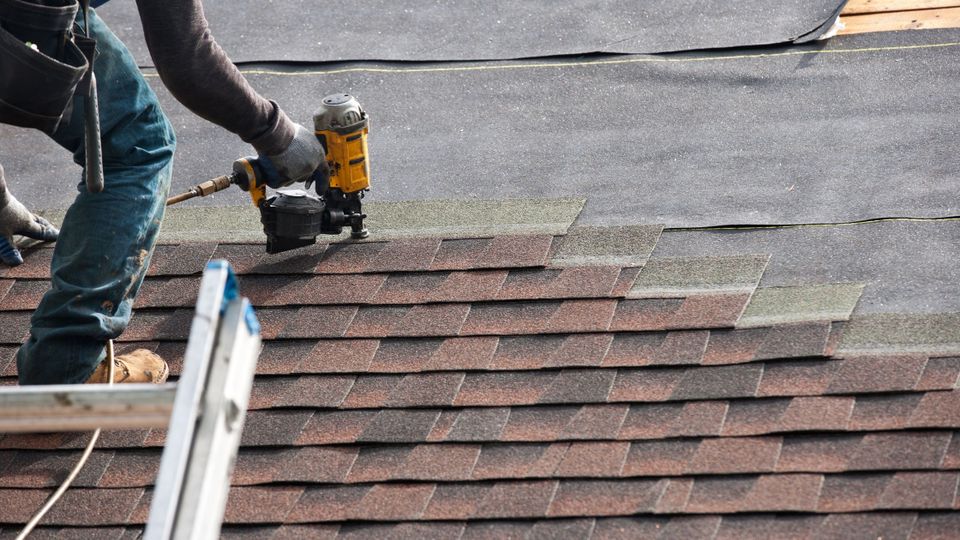
Quality installation forms the foundation of long roof life. The roof deck must provide adequate support and proper drainage slopes. Underlayment installation creates the first line of defense against water penetration, while flashing details seal vulnerable areas around penetrations and transitions.
Proper ventilation systems prevent moisture buildup in attic spaces. Poor ventilation leads to ice dam formation in cold climates and excessive heat buildup in warm regions. Both conditions reduce roof lifespan and compromise energy efficiency.
Experienced professionals understand manufacturer specifications and local building codes. They select appropriate fasteners, follow nailing patterns, and ensure proper overlap details. These seemingly minor details significantly impact long-term performance and roof warranty coverage.
The manufacturer's warranty often requires professional installation to remain valid. DIY installations or work by unqualified contractors can void warranty protection, leaving homeowners responsible for premature failures.
Proper ventilation systems prevent moisture buildup in attic spaces. Poor ventilation leads to ice dam formation in cold climates and excessive heat buildup in warm regions. Both conditions reduce roof lifespan and compromise energy efficiency.
Experienced professionals understand manufacturer specifications and local building codes. They select appropriate fasteners, follow nailing patterns, and ensure proper overlap details. These seemingly minor details significantly impact long-term performance and roof warranty coverage.
The manufacturer's warranty often requires professional installation to remain valid. DIY installations or work by unqualified contractors can void warranty protection, leaving homeowners responsible for premature failures.
Maintenance Requirements for Maximum Average Life Expectancy
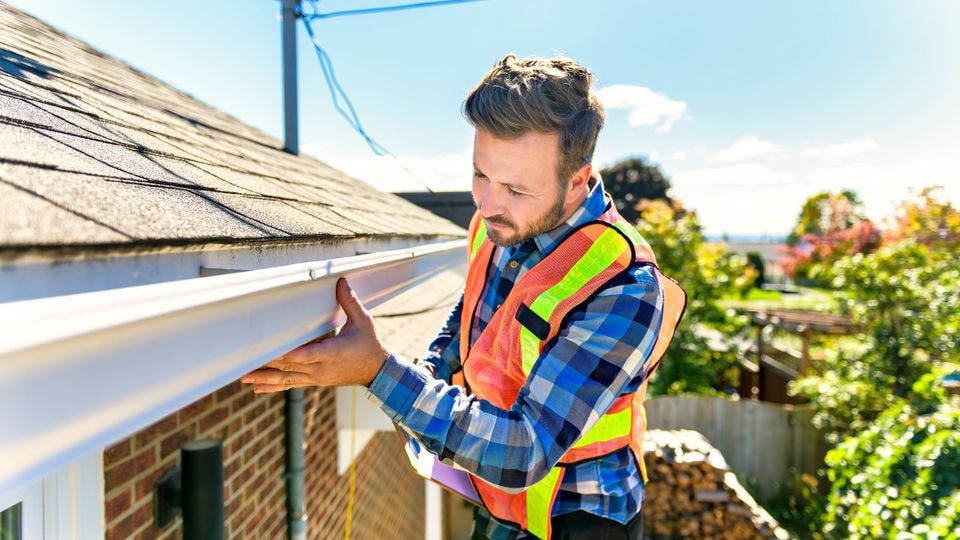
Regular maintenance extends roof lifespan significantly while reducing total ownership costs. Annual inspections identify minor issues before they become expensive problems. Professional inspections cost less than emergency repairs and help maintain warranty coverage.
Routine maintenance includes gutter cleaning, debris removal, and minor seal repairs. Clogged gutters create water backup that can damage roof edges and underlying structures. Tree branches touching the roof cause abrasion and provide pathways for animal intrusion.
Weather conditions following storms require prompt attention. Wind damage may not be immediately visible but can compromise system integrity. Professional assessment after significant weather events helps identify problems that might otherwise go unnoticed.
Preventive maintenance programs offered by roofing contractors help homeowners stay current with necessary tasks. These programs often include priority service during busy seasons and discounts on future work.
Routine maintenance includes gutter cleaning, debris removal, and minor seal repairs. Clogged gutters create water backup that can damage roof edges and underlying structures. Tree branches touching the roof cause abrasion and provide pathways for animal intrusion.
Weather conditions following storms require prompt attention. Wind damage may not be immediately visible but can compromise system integrity. Professional assessment after significant weather events helps identify problems that might otherwise go unnoticed.
Preventive maintenance programs offered by roofing contractors help homeowners stay current with necessary tasks. These programs often include priority service during busy seasons and discounts on future work.
Signs Your Roof Needs a New Roof
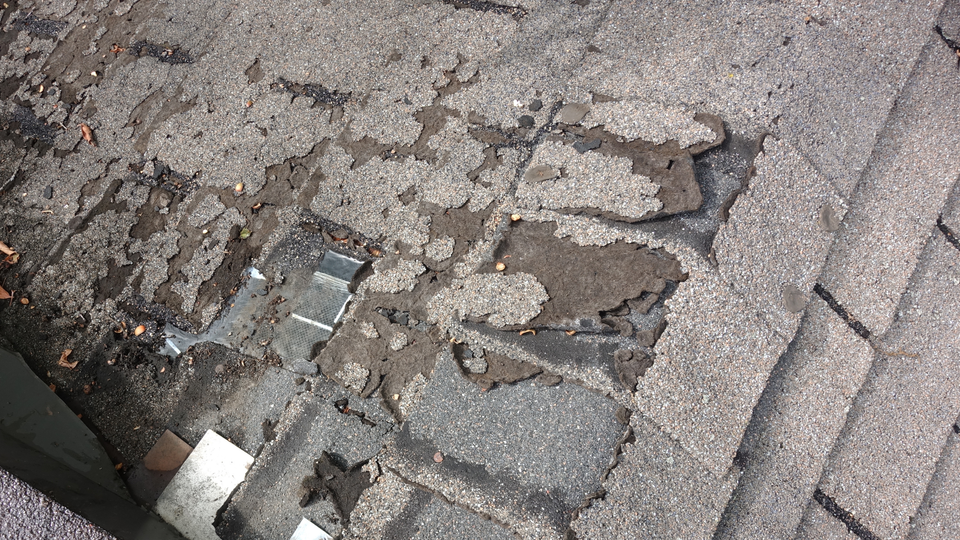
Warning signs indicate when roof replacement becomes necessary. Missing or damaged roofing shingles signal immediate attention needs. Granule loss on asphalt shingles indicates advancing age and reduced protection capability.
Interior signs include water stains, visible daylight through roof boards, and increased energy bills. These symptoms often indicate advanced deterioration requiring complete roof replacement rather than repairs.
Frequent repairs suggest the roof approaches the end of its useful life. When repair costs begin approaching replacement costs, new installation becomes the more economical choice. Age alone, even without obvious problems, may justify replacement to avoid emergency situations.
Professional assessment helps determine whether repairs or replacement provide better value. Experienced contractors can evaluate structural conditions, remaining material life, and cost projections to guide homeowner decisions.
Interior signs include water stains, visible daylight through roof boards, and increased energy bills. These symptoms often indicate advanced deterioration requiring complete roof replacement rather than repairs.
Frequent repairs suggest the roof approaches the end of its useful life. When repair costs begin approaching replacement costs, new installation becomes the more economical choice. Age alone, even without obvious problems, may justify replacement to avoid emergency situations.
Professional assessment helps determine whether repairs or replacement provide better value. Experienced contractors can evaluate structural conditions, remaining material life, and cost projections to guide homeowner decisions.
Maximizing Your Roof's Performance
Several strategies help maximize roof longevity and performance. Proper attic ventilation maintains consistent temperature and prevents moisture problems. Adequate insulation reduces energy costs while protecting roofing materials from extreme temperature variations.
Tree management prevents damage from falling branches and reduces debris accumulation. Overhanging branches should be trimmed to prevent contact with roofing materials. Regular gutter maintenance ensures proper drainage and prevents ice dam formation.
Professional relationships with qualified roofing contractors provide ongoing support and expertise. Contractors familiar with specific roof systems can provide targeted maintenance recommendations and prompt service when issues arise.
Documentation of maintenance activities and repairs helps track roof condition over time. This information proves valuable for warranty claims and helps inform future maintenance decisions.
Tree management prevents damage from falling branches and reduces debris accumulation. Overhanging branches should be trimmed to prevent contact with roofing materials. Regular gutter maintenance ensures proper drainage and prevents ice dam formation.
Professional relationships with qualified roofing contractors provide ongoing support and expertise. Contractors familiar with specific roof systems can provide targeted maintenance recommendations and prompt service when issues arise.
Documentation of maintenance activities and repairs helps track roof condition over time. This information proves valuable for warranty claims and helps inform future maintenance decisions.
FAQs
How do I know the average lifespan of my specific roofing materials?
The lifespan of your roof depends on the specific materials used and local climate conditions. Asphalt shingles typically last 15-30 years, while metal roofs can last 40-70 years. Consult your roofing contractor or manufacturer documentation for specific expected life spans based on your installation.Quick tip: For additional insights on roofing materials and their environmental impact, the International Association of Certified Home Inspectors provides valuable resources at NACHI.org to help homeowners make informed decisions about their roofing investments.
What factors most significantly impact the lifespan of your roof?
Climate and weather conditions, installation quality, and maintenance practices most significantly impact roof longevity. Extreme temperature fluctuations, severe weather, poor installation techniques, and neglected maintenance can dramatically reduce expected lifespan. Regular maintenance and quality installation maximize performance.
When should I schedule routine maintenance for my commercial roof?
Commercial buildings should undergo annual inspections and routine maintenance twice yearly, typically in spring and fall. Building managers should also schedule inspections after severe weather events. Commercial roofing materials require professional attention to maintain warranty coverage and prevent premature failure.
Can poor ventilation really affect my roof last duration?
Yes, poor ventilation significantly reduces roof lifespan by creating moisture buildup and extreme temperature conditions. Adequate ventilation prevents ice dams, reduces cooling costs, and prevents material degradation from trapped heat and humidity. Proper ventilation systems are essential for maximizing roof performance.
How do local climate conditions affect different roofing materials?
Local climate impacts various materials differently. Heavy rainfall challenges flat roofs and wood materials, while UV rays degrade asphalt and plastic components. Coastal areas accelerate metal corrosion, while freeze-thaw cycles stress all materials. Material selection should match local environmental conditions for optimal performance.
What's the difference between architectural asphalt shingles and regular ones?
Architectural asphalt shingles are thicker, heavier, and more durable than three tab asphalt shingles. They typically last 5-10 years longer, offer better wind resistance, and provide enhanced aesthetic appeal. The additional cost often provides better long-term value through extended service life and improved performance.
Conclusion
Understanding roof life expectancy helps homeowners make informed decisions about their roofing investments. Different materials offer varying lifespans, maintenance requirements, and costs. Quality installation by experienced professionals, combined with regular maintenance, maximizes roof performance and longevity.
The relationship between climate conditions, material selection, and maintenance practices directly impacts how long your roof will protect your home. By choosing appropriate materials for your local environment and maintaining them properly, you can achieve or exceed expected lifespans while minimizing total ownership costs.
For detailed information about different roofing options available for your home, explore our comprehensive guide on Exploring Various Roof Types: Which One is Right for You?. Additionally, understanding your roof's components helps with maintenance decisions - learn more in our Understanding the Anatomy of Your Roof: A Comprehensive Guide.
The relationship between climate conditions, material selection, and maintenance practices directly impacts how long your roof will protect your home. By choosing appropriate materials for your local environment and maintaining them properly, you can achieve or exceed expected lifespans while minimizing total ownership costs.
For detailed information about different roofing options available for your home, explore our comprehensive guide on Exploring Various Roof Types: Which One is Right for You?. Additionally, understanding your roof's components helps with maintenance decisions - learn more in our Understanding the Anatomy of Your Roof: A Comprehensive Guide.
